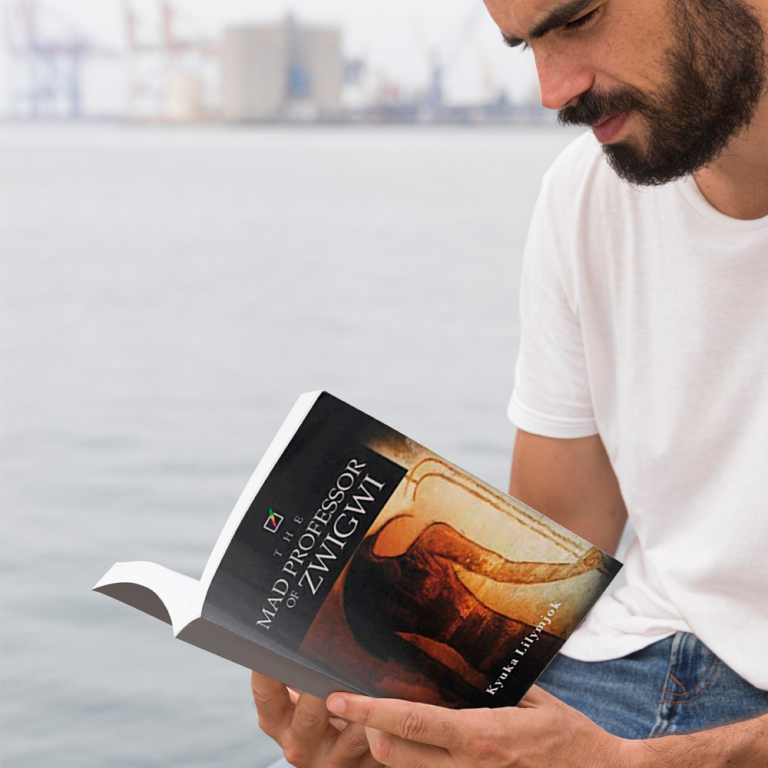Yusuf Ninzim Shamagana
Department of Theatre and Performing Arts
Ahmadu Bello University, Zaria, Nigeria.
yusufshamagana232382@gmail.com
Abstract
Theatre practice has through the ages not only been shaped by dominant conventions, but also notable advancements or responses of societies to basic needs for survival of the human species. In Nigeria, like many developing countries, theatre practice has been further circumscribed by the need to negate the assumptions of cultural imperialism. This has necessitated the integration of various forms of theatre, sometimes without ideological relevance to the needs of societies and people that produce and consume the creative works. In this context, radical changes in the narratives are emerging to accommodate current realities of constituent communities of the society, giving us deeper insights into the dilemmas, woes, fears and predicaments of all members of the polity as they struggle to contend with 21st century development challenges. One of such insights is captured by the concept of the ‘New Bermuda Triangle’ advanced by Kyuka Lilymjok (erstwhile Adamu Kyuka Usman) in his novel, The Death of Eternity. The New Bermuda Triangle the tripartite scourges of HIV/AIDS, Terrorism and Environmental Pollution currently afflicting the world, particularly developing nations. Anchoring on adaption theory, this chapter advances the argument that the New Bermuda Triangle has given us another theoretical lens through which we can analyze a society’s development challenges. The illustrations for the chapter are based on the performance of “Death of Eternity’, adapted from Lilymjok’s novel, The Death of Eternity by the Ahmadu Bello University Zaria (Nigeria) Studio Theatre.
Background
Theatre, like other forms of art, has been used as a medium through which human societies express themselves. In ancient Greece, for instance, besides serving as a medium of entertainment, theatre was also deployed as a tool for cultivating and nurturing national consciousness. Theatre was taken so seriously in Athens that participation in theatre was a key requirement of validating Athenian citizenship:
The experience of theatre in classical Athens was in some ways akin to participation in other institutions of civic life. Athens was a participatory democracy for its citizens, though citizenship was restricted to adult male Athenians: women, foreigners, slaves, freed slaves, and children were not citizens. Citizens sat in the assembly to discuss and vote on matters of state policy, and they were eligible to serve in all public and military offices as well. Attendance at the City Dionysia was, then, like other aspects of Athenian public life, a privilege and an obligation mainly reserved for citizens. (Worthen, 16).
From the above, we have a foundational understanding of the inextricable link between theatre and politics. The role of theatre in the preservation and promotion of national pride and identity was amplified through the nature and organization of ancient Greek theatre. A critical look at ancient Greek tragedies such as Sophocles’ Oedipus Rex and Aeschylus’ Agamemnon further underscoreshow theatre was an important element in the process of building national consciousness: a consciousness that attributed the successes and failures, the woes and dilemmas of a tragic hero (who must be of noble descent) to the whims of fate. This implied that whatever calamity befell a common man had no credibility of being termed a tragedy in ancient Greek society. Ancient Greek drama laid the foundation of what later became conventional drama or theatre.
With the emergence of industrialization in Europe which ushered in the modern era, people began to be confronted with new realities. Social relationships began to experience unprecedented changes to reflect emerging capitalist mode of interaction between labour and capital. Concepts of freedom, liberty and democracy received renewed emphasis. With these developments, a need for new dramatic narratives became imperative. Narratives that would take cognizance of the challenges of modern man began to unfold under this imperative. The argument advanced by Arthur Miller in his Tragedy and the Common Man was aimed at articulating these crucial changes that characterized his contemporary society viz-à-viz their relationship with modern dramatic expression. Miller argues that the common man in a typical modern society was also faced with tragedies. Hence he reserved the right to seek improvement of his life by conquering those forces that impede the full realization of his humanity. According to him:
The tragic night is a condition of life, a condition in which the human personality is able to flower and realize itself. The wrong is the condition which suppresses man, perverts the flowing out of his love and creative instinct. Tragedy enlightens – and it must, in that it points the heroic finger at the enemy of man’s freedom. The thrust for freedom is the quality in tragedy which exalts. The revolutionary questioning of the stable environment is what terrifies. In no way is the common man debarred from such thoughts and actions[…]
It is time, I think that we who are without kings, take up this bright thread of our history and follow it to the only place it can possibly lead in our time—the heart and spirit of the average man. (Miller, s11 and 20)
In the excerpt above, Miller argues that the conception of tragedy in the modern era need be reviewed. Anchoring his argument on the tremendous social, political, economic and cultural changes that have occurred in his contemporary society, he observes that the growing decline of monarchy as a system of government is a clear indication that time was ripe for the common man to be the focus of modern tragedy. Miller further crystalize his argument by publishing Death of a Salesman in 1949. In Death of a Salesman, we are presented with a situation where Willy Lowman, a salesman with ambition of becoming wealthy and living the American dream, dies without accomplishing his aspiration. To Miller, situations such as this should form the thematic pre-occupation of modern tragedy and by extension modern drama.
Ironically, this period in Africa was when indigenous forms of cultural expressions were suppressed by colonial establishments. Subjugation of the people’s culture and substitution of same with European ways of life was part of a grand colonial agenda aimed at ensuring total political, economic, cultural and intellectual conquest of African people. Theatre, reputed as a viable cultural storehouse of Africans was censored. In Nigeria, for instance, the avant-gardist musical concerts and cantatas popular in Victorian England became the ‘ideal’ form of entertainment which local bourgeoisie consisting of ex-slaves and emigrant community patronized. Colonial and Christian hegemony thus produced a calculated doctrinal literature which was viewed as a necessary process of civilizing and humanizing ‘uncouth’ Africans (Onage, 106). The theatre of colonial period in Nigeria was coercive and intimidating because it aimed at introducing and initiating the Nigerian convert into European values and stream of thought (Onage 9).
Persistent repression and anti-people policies of Nigerian colonial administration against indigenous theatre provoked radical responses from the local people. Indigenous performance modes were harnessed by artists like Hubert Ogunde to comment on the pervasive injustice that characterized the colonial administration. The art-for-art’s sake orientation promoted by colonial establishment was abandoned in favour of functionalist art that serves the end of society. Ogunde’s “Strike and Hunger”, which was based on the general strike by Nigerian workers in 1945, pioneered the battle towards theatre committed to achieving progressive social, political and economic ends in the colonial era (Gbilekaa, 29). Commenting on the political commitment of Ogunde’s theatre to the quest for self-government in the colonial era, Michael Etherton observes that Ogunde:
…specifically saw his company as the means by which he could help establish the cultural independence of the Africans in Nigeria as a back-up for growing movement for political and economic independence, or as it was called, self-government. (Etherton 45)
It is important to add here that after many African countries attained ‘flag’ independence by mid-20th century, the concerns of theatre in Africa shifted to address peculiar issues that border on betrayal of the people by the new political elite and the challenges of nation building.
From the foregoing illustrations, it is clear that theatre practice over the centuries have been influenced by prevailing social realities of the respective periods. Since the 21st century also pose different challenges, it becomes imperative for the 21st century theatre in Africa and other developing countries to also swing in the direction that will meet these challenges. This chapter explores an emerging narrative that encapsulates the tripartite development conundrum which the 21st century society is trapped. Terrorism, environmental pollution and HIV/AIDS, dubbed the New Bermuda Triangle in the book under review: The Death of Eternity, constitute the conundrum. The chapter focuses on how theatre can be used to penetrate this Triangle using ‘Death of Eternity’, a dramatic performance of Kyuka Lilymjok’s novel as an illustration.
Conceptual Framework
The theory of adaptation emerged in the late 1950s with a view to explore the continuous development of creative adaptation, especially from book to film, though in the field of drama, the practice of adaptation has been in existence since the period of ancient Greek dramatists such as Sophocles, Aeschylus, Aristophanes and Euripides among others, who adapted popular myths and legends within the Greek cosmology in their drama. The theory tried to supplement the comparative adaptation theory with a critical examination of the creative process of adaptation, discussing issues such as the what, who, why, how and whom of adaptation. Hutcheon (2006:04) suggests that “the theory of adaptation should not only look at the adapted content in relation to its original source, but should also examine the audiences’ reception related to the adapted contents”. The theory also maintains that the practice of adaptation is central to the process of storytelling. In other words, the theory is of the view that no book or film would be successful without adapting one or two ideas from other sources. Some of the core assumptions of the theory include: that adaptation is an acknowledged position of a recognizable work or works; that adaptation is a creative and an interpretative act of salvaging; and that adaptation is an extended intertextual engagement with an adapted work.
Adaptation has been recognized all through history as an important aspect of creative endeavour. It entails the transfer of artistic materials or cultural text, be it oral or written, from one domain of expression or presentation to another. Adaptation could also be defined in terms of recasting a literary text into either television, film, celluloid film or stage drama. Liman opines that transposition is another word for adaptation, especially in a context the text changes its position from written to visual or musical format (78). In the opening remarks of her book on the theory of adaptation, Linda Hutcheon reveals “adaptation is everywhere today: on the Internet, in novels and comic books, in your nearest theme park and video arcade” (Hutcheon, 2). Simply put, adaptation is a movement of literary and cultural texts from one genre to another or from one medium to another. Be this as it may, it is worth noting that there are instances adaptation is done within the same genres and media as in the case of different versions of films and musical composition. Through adaptations and transpositions, literary texts are transferred and made to have fresh import in the new environment or socio-political context they are transposed.
Writing on adaptation, Young calls it an act of “borrowing, copying or theft of other people’s ideas” (4). He argues further that “whatever we write is, knowingly or unknowingly, a borrowing. Nothing comes from nowhere”. This suggests that whatever we do, we are directly or indirectly imitating others. This is saying in other words, that no text is independent by itself; it is simply a recreation from other texts. This assertion is corroborated by Kristeva’s view that “any text is an amalgam of others, a part of a larger fabric of cultural discourse” (64-91). Similarly, Stam elaborates further that “the text feeds on and is fed into infinite permutations which are seen through different interpretations” (54). One important variable in the above positions is ‘interpretation’. That is, adaptation in itself is a process of interpretation, which in turn stimulates another wave of interpretations from the consumers or audience of the adapted content. Adapting a novel to a dramatic performance or film for instance, affords the audience an opportunity of ‘reading’ the text differently. Likewise adaptation of folktales to novels or drama, a practice that is popular within the African context.
Giving further insight into the popularity of adaptation and transposition as a creative enterprise, Liman reveals that the commonest samples of adaptation are easily found in the transposition of literary texts into cinema (78). According to him, the television rendition of Shakespearean plays have transformed what is widely considered as high culture stage plays into popular culture which is attracting even people that are averse to reading play text. Some of the renowned cases of literary adaptation include Jane Austen’s Pride and Prejudice and Sense and Sensibility; Charles Dickens’ Great Expectations, David Copperfield and Oliver Twist; Ernest Hemingway’s A Farewell to Arms; Jonathan Swift’s Gulliver’s Travels; Robert Louis Stevenson’s Treasure Island; Emily Bronte’s Wuthering Heights; Leo Tolstoy’s War and Peace and Anna Karenina, Fyodor Mikhaylovich Dostoevsky’s Crime and Punishment and The Brothers Karamazov; Herman Melville’s Moby-Dick, William Golding’s Lord of the Flies; Doctorow’s Ragtime; Scott Fitzgerald’s The Great Gatsby; Frantz Kafka’s The Trial; Albert Camus’ The Plague, George Orwell’s Nineteen Eighty-Four, Joseph Heller’s Catch-22, Boris Pasternak’s Doctor Zhivago, and Michael Ondaatje’s The English Patient. These examples underscore the ubiquitous relationship between literature (in this case, the prose or novel) and film that is throwing up limitless possibilities.
In this study, the adaptation process takes place at two levels. The first is the adaptation of the concept of the Bermuda Triangle by Kyuka Lilymjok from popular myth or belief to his novel The Death of Eternity. The second level of adaption is adaptation of the novel from the prose form to a dramatic performance. In the first level, the concept of the New Bermuda Triangle acquires new meaning and relevance different from the original Bermuda Triangle. In the second level, the novel is not only transposed to another genre: drama (performance), but is disciplined to address key development issues confronting Nigeria, and by extension other developing countries. This automatically implies that a sizeable portion of the novel that does not conform to the larger message intended to be passed by the performance would be left out.
The New Bermuda Triangle: A New Development Theory for Developing Countries?
The concept of development is a relative term that is widely discussed with regards to political, social, economic, and cultural events or progress in a society. Closely related to the term “development” is the term “growth”. One of the characteristics development and growth share is change. Development is ordinarily viewed as progress from a low state of existence to a high state of being. It is also changes that have occurred within a given period of time.
For the most part, development implies change in a specific direction that is regarded as positive or highly valued. In trying to identify specific kinds of development taking place in a given country or context several indicators provided by development theorists are usually looked for. For example, Iyorza argues that the three basic criteria for measuring development include, first, an increase in the efficiency of the production system of a society; second, the satisfaction of the population’s basic needs, and third, the attainment of objectives sought by various groups in a society which are linked to the use of scarce resources (350). These criteria according to him, translates into economic, social and political growth or development. Lilymjok in his novel The Death of Eternity also gives us alternative criteria to be considered in the discourse of development through his concept of The New Bermuda Triangle. But before delving into the concept proper, it is important for us to understand that the concept of The New Bermuda Triangle is an adaptation from the popular myth of The Bermuda Triangle.
The Bermuda Triangle, also known as the Devil’s Triangle, is a loosely-defined region in the western part of the North Atlantic Ocean, where a number of aircraft and ships are said to have disappeared in mysterious circumstances. Popular culture has attributed the disappearances of ships and aircraft in the region to paranormal activities by extraterrestrial beings (Wikipedia). Most reputable sources however, dismiss the idea that there is any mystery, indicating that a significant percentage of the incidents were spurious, inaccurately reported, or embellished by later authors. Be this as it may, the Bermuda Triangle myth today connotes doom or unpleasant situation. Perhaps that is the reason Kyuka Lilymjok deems it necessary to utilize this narrative as a theoretical prism through which the world’s development predicament can be viewed.
Inaugurating the New Bermuda Triangle theory of development, Lilymjok, through the protagonist of the story Tibor addresses a group of villagers thus:
I am the new tree of life dispersing bad news …today, if you don’t die of AIDS, terrorism will claim you. If you escape the arrow of terror, you will without fail find death under the canopy of environmental pollution. This is the new Bermuda Triangle no man, animal or plant can fly over.” (Page 27)
From the above excerpt, the author succinctly captures three major development challenges the world is battling with currently: environmental pollution, HIV/AIDS and terrorism. Environmental pollution is a major problem facing the world today. This problem has continued to increase with every passing day causing grave and irreparable damage to the earth. Environmental pollution encompasses three media of pollution, namely, air, water, and land. Air pollution has been identified as the most harmful form of pollution in our environment. It is caused by injurious smoke emitted by cars, buses, trucks, trains, and factories. Evidence of increasing air pollution is seen in lung cancer, asthma, allergies, and various breathing problems along with severe and irreparable damage to flora and fauna. Also, Chlorofluorocarbons (CFC) released from refrigerators, air conditioners, deodorants and insect repellents have continued to cause severe damage to the Earth’s environment. Similarly, industrial waste products released into lakes, rivers, and other water bodies, have made marine life no longer hospitable. Soil pollution and degradation by acid rain, fertilizers and pesticides are also major threats to life and development.
HIV/AIDS has also claimed and is still claiming millions of lives worldwide. Global Health Observatory (GHO) data (2017) reports that since the beginning of the epidemic, more than 70 million people have been infected with the HIV virus and about 35 million people have died. GHO also reveals that globally, 36.7 million people were living with HIV at the end of 2015, pointing out that Sub-Saharan Africa remains most severely affected with nearly 1 in every 25 adults (4.4%) living with HIV and accounting for nearly 70% of the people living with HIV worldwide.
The menace of terror is another challenge to development. Terror is pervasive especially in Africa and the Middle East regions. Terror groups such as Al’ Qaeda, Taliban, Al-Shabab, Hezbollah, Islamic State (IS), Boko Haram among others have become increasingly popular due to the scale of terror they unleash on the world. According to a report on statistical information on terrorism, in 2015 alone, a total of 11,774 terrorist attacks occurred worldwide, resulting in more than 28,300 total deaths and more than 35, 300 people injured. In addition, more than 12, 100 people were kidnapped or taken hostage.
Environmental pollution, terrorism and HIV/AIDs – the new Bermuda Triangle are no doubt serious threats not only to development on earth but to life on it. This means the global community especially developing countries must pay attention to initiating policies and developing new approaches and strategies that can help to address them. In this respect therefore, the performance of ‘Death of Eternity’ is timely and relevant because it brings contemporary realities to the fore.
In the light of the above, the concept of the New Bermuda Triangle can be used as a tool for analyzing the general human condition, especially in developing countries. In doing so, the analyst is simply required to subject the country or region under study to the three indicators provided us by the triangle: HIV/ AIDS, terrorism and environmental pollution. HIV/AIDS in this theoretical context can be seen as representational of disease prevalence in general. When a country has low HIV/AIDs, terrorism and environmental pollution, such a country can be adjudged as being in a healthy development state as far as The New Bermuda Triangle theory of development is concerned.
‘Death of Eternity’ in Perspective
The play recounts a story of Tibor, a Hungarian eco-evangelist and activist who arrives Cockde, a fictional West African country and settles on the Tanka Plateau, a cozy and highly vegetative location. Tibor is in Cockde to represent an international non-governmental organization known as Justice for Nature International, of which he is also a member. The Cockden government has recently signed a deal with the organization code named ‘Debt-for-Nature Swap, which requires Cockden government to conserve its environment, while Justice for Nature International offsets some of the country’s debt. Tibor’s mission in Africa is to ensure that the Cockden government fulfills its own part of the bargain. On his arrival, Tibor begins his environmental evangelism, telling the people of the Tanka Plateau and neighbouring villages about the devastating effects of chemical fertilizer on their farmlands. This earns him the appellation ‘strange white man’, an approximation of the people’s (mis)understanding of Tibor’s personality and mission. The local people wonder why a white man would leave the comfort of his home country only to come and be fighting for the protection of trees, farmlands, and wild animals that he did not contribute to bring into existence.
Like a whirlwind, news of the strange white man reaches Nunsa, a forest community that has been experiencing mysterious deaths recently. The elders of the land decide to send four young men under the leadership of Chittima to go in search of the strange white man in the hope he may decipher the cause of their calamities. Close to the Tanka Plateau, the Nunsa envoys meet a farmer who laments that death is pervasive nowadays. He advises them that it would have been better for them to stay and die in their village than come and die in a foreign land no one will bury them. According to the farmer:
Death is everywhere nowadays. There is nowhere to hide. On this farm, I have seen hundreds of families move past me looking for where to hide, but they don’t find any. I have spoken with some. They said bad governments in their nations had forced them to flee the lands of their forefathers where they thought they would live forever. Others said they were fleeing because of floods that had taken over their farmlands and houses, while others said their farms had been impoverished by fertiliser and could no longer grow crops. Others said they were fleeing from wars; yet others said the desert had come to them with a naked sword. But they don’t know where they are fleeing to is even worse. That is why I stuck to my farm, because I know there is nowhere to flee. Even the strange white man may not help you much, my boys. The strange white man himself, I learned, is a refugee from his country. He thought things were bad in his country and fled here. But I think he is beginning to have regrets about our land. He has not said so in words, but every look in his eyes gives me that impression. You should have stayed and died in your village. If you die here, nobody will bury you. The vultures that would have buried you in the sky, I don’t see many of them these days. My wife is dead, my children are dead and even this land I am cultivating is dead. Yet, I will not leave this place to chase misery in foreign lands. I am well past the time I was intimate with life. My expectations from it have withered and my only hope is that when the time eventually comes for it to leave me, it will not stab me too severely, but leave me peacefully the way I found it. I did not take it by violence and my one hope now is that it does not leave me with violence. (Scene 4)
The above statement paints a vivid picture of the people’s dilemma, at the same time betraying a tone of hopelessness and helplessness. To the farmer, no glimmer of hope seems to exist in the current situation where everything seems to be dying. As such, he sees no wisdom in the mission of the youths sent by Nunsa elders. Notwithstanding the farmer’s damning submission, the four young men remain resolute in their search for the strange white man. Over the night, one of them, Demmi, eats a poisoned bandicoot rat and dies while his friends are asleep. On discovering what has happened, the remaining three begin to lament and exclaim ‘Demmi has entered the forest!’ referring to their friend’s sudden demise. Tibor who unknown to them returned to the Tanka Plateau the previous night heard their lamentation and exclamation. The strange white man is perplexed by the youths’ usage of language, particularly their expression “Demmi has entered the forest!” He later advises that Soto and Odoko should convey Demmi’s corpse to Nunsa, while Chittima stays behind, so that he and Chitima can proceed to Nunsa together the next day.
On their way to Nunsa village, Tibor’s car runs short of water in the radiator. It is at this time Tibor and Chittima discover that Odoko has stolen Tibor’s jerry can which he uses in storing water. Odoko stole the jerry can thinking it is a store of something of great value. At Nunsa village, Chittima reports Odoko’s sacrilege to the elders. The elders pass a verdict that Odoko be hanged on Lindi the evil tree, but Tibor intervenes. Having settled Odoko’s case, Tibor reveals to the elders that their misery is caused by the poisonous waste released into river Kodewa by Chinaka refinery, promising he will confront the refinery management on behalf of the community.
Tibor confronts the Pollution Control Manager (PCM) of the refinery and makes a case on behalf of Nunsa village. Unfortunately, the PCM is later shot dead by some police officers when they discover he is carrying a bag-load of money. The PCM was on his way to bribe Boshege (Tibor’s house help) to kill Tibor. The death of the PCM brings a setback to Tibor’s agitation as the new PCM refuses to take responsibility of earlier negotiations between Tibor and the late PCM. The case finally lands in court where prolonged litigation commences. Meanwhile Odoko out of shame leaves Nunsa village for the city to pursue his fantasies.
As Tibor is facing the refinery, Francis, another character and native of Namato, a village close to the Tanka Plateau constitutes himself into an environmental butcher with his wanton logging activities. He is confronted by Jacob, who challenges him to desist from plundering the people’s collective future:
…I am raising a matter of grave concern to the future of our people…Has it ever occurred to you it is the common wealth of our hand that you are taking to the banks for yourself alone? (Scene 7)
Instead of Francis hearkening to the voice of reason, he derisively responds to Jacob thus:
Like I said earlier, if you have run short and don’t even have transport fare back to the city, I can help, you know, we don’t spend much money here on such vices as beer and women as you people do in the city. (Scene 7)
His audacity is born out of the fact that he often extends cheap favours such as carrying the Bilami (Local Chief) in his car during important occasions.
After many years of litigation with no hope of justice from the courts, the people of Nunsa resorts to reviving their local terror group known as Hotorumbe Leopard Skins. Hotorumbe Leopard Skins successfully carry out their mission. Odoko, returns home during his sojourn in the city to flaunt his new social and economic status. His city appearance fascinates both married and unmarried women in the village. Given Odoko’s character as a man of easy virtue, he sleeps with almost all the women in the village. This is depicted in a scene through dance drama, where Odoko buys drinks for all the people present at the drinking pub, as he takes women into the chambers (back stage) to sleep with them in turns.
Towards the end of the performance, many women die of HIV/AIDS, courtesy of Odoko’s illicit affair with them. Even old men like Mmanya are not spared the shame of HIV/AIDS. With this unfortunate development, Nunsa hangs the cause of their predicament on Tibor, whom they blame for preventing them from killing Odoko before he brought the calamity now afflicting them. They resolve to go to the Tanka Plateau to kill the strange white man. At this moment, Ben, Nunsa’ counsel comes with news of Nunsa’s victory in the case against the refinery. The performance ends with Ben pleading with Tibor to have mercy on himself.
Reclaiming the Future in ‘Death of Eternity’
As narrated above, the performance ‘Death of Eternity’ does not only acquaint us with the tripartite development dilemma the 21st century society is confronted with, but also articulates some socio-economic dynamics that seek to perpetuate the current situation. The predatory presence of multinational chemical companies in Africa is identified as a crucial factor that encourages indiscriminate use of chemical fertilizer by local farmers. Given the availability of the product, local farmers are only concerned with boosting their annual yields without much consideration of the negative impacts of chemical fertilizer on their farmlands. This is a running commentary on how the relationship between members of local communities in Africa and multinational companies contribute in wreaking havoc on the environment. This point is further amplified by a member of Nunsa community, who probes the sincerity of Tibor’s commitment to their cause thus:
‘Who are the owners of the refinery that are passing death into river Kodewa? Are they not the cousins of the strange white man?’
The case of Nunsa community is a burning subject of national discourse in Nigeria where activities of multinational oil corporations in the Niger Delta region of the country have continued to spell doom for the environment. This situation is further exacerbated by pervasive corruption and inadequate commitment to corporate social responsibility by the multinational corporations. In the play, the subject of corruption is explored in the character of the Pollution Control Manager (PCM), who would rather divert the annual allocation for waste management into his private pocket than put the monies to legitimate use. Hence, Nunsa village suffers the consequence of his (in)action. The message here is that for the fight against pollution to be successful, institutional corruption must be addressed. So long as corrupt elements exist in the refineries, adherence to corporate social responsibility will continue to be jeopardized.
Promiscuity and greed as personified in the characters of Odoko and Nunsa women respectively, come to the fore as crucial factors that aid the spread of HIV/AIDS. Odoko’s approximation of a ‘good life’ is one that entails a man working hard during day time to raise money, then go for drinking spree in night clubs, where women are at his beck and call. Nunsa women on the other hand, propelled by greed, subscribe to Odoko’s conceptualization of a good life. Odoko becomes the shining star in their gloomy horizon who they dream about. The married ones among them avail themselves to him at the expense of their marital commitment, while the unmarried ones also do same with relish so long as he continues to shower gratifications in the form of money, wrappers, et cetera. on them.
Terrorism or militancy is projected in the performance as a product of perceived social injustice which ironically is being perpetuated by the same institutions mandated to serve justice to the common man – the courts. As the saying goes ‘justice delayed is justice denied.’ The people of Nunsa village run out of patience with the snail-pace their case with Chinaka refinery is going. This is further aggravated by the astronomical increase in the number of people dying from strange ailments believed to be caused by the consumption of water from river Kodewa. Because the government is slow in justice delivery, the people resort to militancy through the instrumentality of their local terror organization: Hotorumbe Leopard Skins.
On the flipside, it can also be argued that the subsequent delivery of justice to the people of Nunsa towards the end of the performance after the Leopard Skins members have killed the refinery’s lawyer is a subtle admonition to all aggrieved people on the need for patience and faith in the nation’s justice system irrespective of the odds that seem to slow down the hands of justice. Be this as it may, the question that still lingers is: how do we reclaim our future from a dying eternity? In other words, how can we wriggle ourselves out of the New Bermuda Triangle?
In addressing the challenge of HIV/AIDS pandemic, the play suggests abstinence from indiscriminate and unprotected sexual intercourse. This message is relayed to the audience through the use of songs that admonish people on the virtue of self-control as a non-negotiable factor in heralding the emergence of a HIV-free society. To mitigate the dangers of environmental pollution, the play emphasizes a need for a dual approach where refinery management, multinational corporations and local community members have crucial roles to play. Multinational corporations operating in Africa must as a matter of necessity step up their commitment to corporate social responsibility. This point is underscored by the case between Nunsa Village and Chinaka refinery. By so doing, effective ways of ameliorating environmental pollution would be devised. On their own part, local community members must embrace the culture of tree planting as advocated by Tibor.
Similarly, they must unite against actions of self-seeking capitalists like Francis who seeks to devour their collective commonwealth (environment) for personal monetary gains. The symbolic burning of Francis’ sawing machine in the village square by Tibor and the villagers is a running commentary on the need for unity against a common adversary. Lastly, the play handles the issue of terror with objective caution, where the judiciary is admonished not to delay justice to the common man, and the common man is also cautioned against taking laws into his hands. When all these measures are put to practice, it is hoped developing countries will be able to take off the new Bermuda triangle which now hangs round their developmental necks like an albatross.
Conclusion
In The Death of Eternity, Lilymjok ingeniously weaves three global maladies into a Bermuda triangle that is threatening not only to frustrate development efforts particularly in developing nations but annihilate man as well. The novel has succeeded not only in recounting a fascinating story of a community’s collective struggle against overwhelming odds that not only impede its development and progress, but threaten its existence, it also provide us with a new framework for viewing the developmental challenges confronting the 21st century world, particularly developing countries. This was made possible through the creative processes of adaptation and transposition that took place at two levels: adapting the concept of Bermuda Triangle from popular myth to the novel The Death of Eternity by Kyuka Lilymjok, which was in turn adapted to drama performance by Mr. Steve Y. Daniel. Just as Sophocles’ Oedipus Rex spoke to ancient Athenian society, Arthur Miller’s Death and the Salesman to industrializing European society, Hubert Ogunde’s ‘Strike and Hunger’ to colonial Nigeria, Death of Eternity also speaks about the realities of developing nations in the 21st century, hoping that when the issues raised in the play are given desired attention, current development challenges will be addressed.
Works Cited
Adeoti, Gbemisola. ‘An Exploratory Study of Yerima’s Drama’ in Gbemisola Adeoti (Ed) Muse and Mimesis: Critical Perspectives on Ahmed Yerima’s Drama. Ibadan: Spectrum Books LTD, 2007. Print.
Gbilekaa, Saint. Another Voice: Meta-Critical Essays in Drama, Theatre and Politics, Zaria: ABU Press. Print.
Hutcheon, Linda. A Theory of Adaptation, London: Routledge, 2006. Print.
Iyorza, S. ‘Rethinking Nigeria’s Development Using African Traditional Communication Media for National Orientation’ In Calabar Journal of Liberal Studies (CAJOLIS), Vol. 1 No. 1, Calabar: University of Calabar Press, 2018.
Kristeva, Julia. Desire in Language: A Semiotic Approach to Literature and Art, New York: Columbia University Press, 1980.
Liman, A. A ‘Textual Fluidity, Adaptation and Representation: The Transposition of Selected Hausa Folktales into Cinema” in The Nigerian Cinema: Reading Nigerian Motion Pictures. Ed. Mohammed O. Bhadmus, Ibadan: Spectrum Books, 2016.
Miller, A. (1949) ‘Tragedy and the Common Man.’ The New York Times (on the web).https://archive.nytimes.com/www.nytimes.com/books/00/11/12/specials/miller-common.html?mcubz=0. Accessed: 20th January, 2018.
Ogunbiyi, Y (2014). ‘Nigerian Theatre and Drama: A Critical Profile’ in Ogunbiyi Yemi (Ed). Drama and Theatre in Nigeria: A Critical Source Book. Abuja, Tanus Books.
Onage, O. (1978). ‘The Crisis of Consciousness on Modern African Literature’ In Onigu Otite (ed) Themes in African Social and Political Thought, Enugu, Fourth Dimension Publishers.
Stam, R. (2000). ‘Beyond Fidelity: The Dialogics of Adaptation’. Film Adaptation. Ed. James Naremore. New Brunswick: Rutgers University Press.
Lilymjok,.Kyuka (2014). Death of Eternity. Ibadan, University Press.
Worthen, W.B (2004). The Wadsworth Anthology of Drama. Singapore, Seng Lee Press.
Young, J.O (2008). Cultural Appropriation and the Arts. Maiden: Blackwell.










